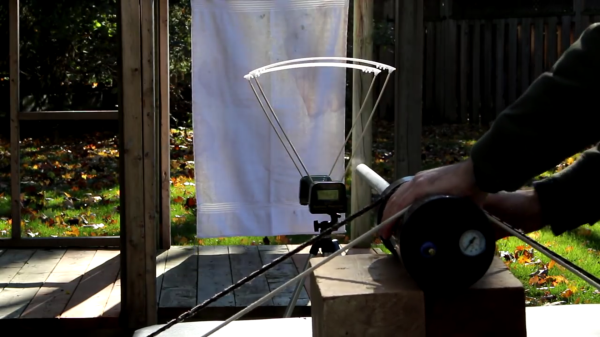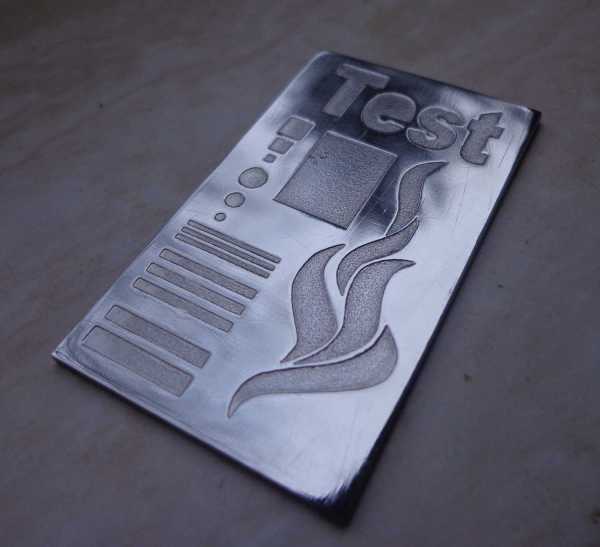If you lived through the Y2K fiasco, you might remember a lot of hype with almost zero real-world ramifications in the end. As the calendar year flipped from 1999 to 2000 many forecast disastrous software bugs in machines controlling our banking and infrastructure. While this potential disaster didn’t quite live up to its expectations there was another major infrastructure problem, resulting in many blackouts in North America, that reared its head shortly after the new millennium began. While it may have seemed like Y2K was finally coming to fruition based on the amount of chaos that was caused, the actual cause of these blackouts was simply institutional problems with the power grid itself.
electricity50 Articles
How Energy Gets Where Its Needed
Even if you’re reading this on a piece of paper that was hand-delivered to you in the Siberian wilderness, somewhere someone had to use energy to run a printer and also had to somehow get all of this information from the energy-consuming information superhighway. While we rely on the electric grid for a lot of our daily energy needs like these, it’s often unclear exactly how the energy from nuclear fuel rods, fossil fuels, or wind and solar gets turned into electrons that somehow get into the things that need those electrons. We covered a little bit about the history of the electric grid and how it came to be in the first of this series of posts, but how exactly does energy get delivered to us over the grid? Continue reading “How Energy Gets Where Its Needed”
Weaponizing Elementary Science Experiments
[austiwawa] was playing around with one of those simple linear motors people build as friendly little science experiments. There’s an AA battery in the middle of a set of magnets. When you put it inside of a spring it zips around inside until you run out of spring or magic pixies in the battery.
Of course, the natural question arose, “How do I make it go fast!? Like fast!” After making explosion and woosh noises for a bit (like any good hacker would) he settled down and asked a more specific question. If I made the coil the barrel of an air gun, and then shot the battery out… would it go faster?
So, he built an air cannon. It took some ingenuity and duct tape, but he managed to line the barrel with a copper coil. After that he built an experimental set-up, because making something dangerous is only okay if it’s science. That’s the difference between sensible adults and children.
He shot three “dead” rounds through the cannon, and got a baseline result. These dead rounds were made so by placing the magnets at the improper polarity to forego the motion-boosting properties. Then he shot three live ones through. It went measurably faster! Neat!
What’s the silliest thing you’ve ever seen properly characterized? Let us know in the comments below.
Continue reading “Weaponizing Elementary Science Experiments”
Etching Your Own Metal
It’s been said that with enough soap, one could blow up just about anything. A more modern interpretation of this thought is that with enough knowledge of chemistry, anything is possible. To that end, [Peter] has certainly been doing a good job of putting his knowledge to good use. He recently worked out a relatively inexpensive and easy way to etch metals using some chemistry skill and a little bit of electricity.
After preparing a set of stencils and cleaning the metal work surface, [Peter] sets his work piece in a salt solution. A metal bar is inserted in the other end of the bath, and both it and the work piece are connected to electrodes. The flow of electricity removes some metal from the exposed work surfaces, producing whatever patterns [Peter] wants.
One interesting thing that [Peter] found is that the voltage must stay under 6 volts. This is probably part of the reason it’s relatively easy to etch with even a wall wort. Above that, the iron work piece produces a different ion which can clog the work surface and create undesirable effects. Additionally, since his first experiments with this process he has upgraded the salt bath with magnetic stirrers. He also gets the best results in a very cold environment.
There are many other uses for etching metals, too. Creating your own printed circuit boards comes to mind, but there are plenty of other uses as well. What will you do with this technique?
Brew A Cup Of Coffee Without Electricity!
So, wether you’ve blown your house’s breakers while cranking up the power on your latest project or a storm has brought low the local power grid, what do you do if you desperately need coffee with no electricity to power your coffee maker? Make like [austiwawa]: crack it open and bust out the tea lights.
Removing the bottom of the coffee maker is simply done, exposing the resistance heating element. Improvising a jig to hold the coffee maker over an arrangement of five tea lights, the candle flames slowly do the work of heating the element to set the maker in motion.
It’s a solution for after the apocalypse… as long as you can find tea lights, coffee plus a grinder, and for some reason don’t want to use the quick and efficient method of brewing over an actual fire (though kitchen hearths are a rarity these days). Now we kind of want to see this adapted for all kinds of other heat sources. Reflected sunlight anyone?
Continue reading “Brew A Cup Of Coffee Without Electricity!”
Swiss Project Looking To Harness Kite Power
Switzerland has bought us many things: the cuckoo clock, cheese with holes in it, and.. kite power? That’s the idea of a Swiss project that is trying to tap the energy of a regular wind that blows between Lake Geneva and the Alps. The group hopes to build large kites that fly at about 150 meters above the ground, with a generator and other components on the ground. The way that this wind energy is converted into electricity is interesting: the kite is pulled up by the wind, spiraling higher and pulling the cable which drives the generator. Once it reaches a maximum height, the kite is trimmed so it sinks down to a lower altitude, and the kite is trimmed again to catch the wind and climb.
It’s a fascinating idea: by controlling the kites, the system could produce power on demand. As long as the wind is up, of course, but in this region of Switzerland, that isn’t an issue, as the wind is very predictable. It doesn’t require as much permanent infrastructure as a wind turbine, and kites are much more attractive than turbines. This makes us wonder if a system like this would be adaptable to a smaller scale: could you build a portable or off-grid system for hiking in windy areas that could charge a battery this way?
The project webpage hasn’t seen any updates since 2013, but the research project seems to still be alive and kicking. Anyone have any details or wild speculation?
(Related, but only tangentially, video of Thomas Dolby lip-synching below the break.)
Via The Bulletin of Atomic Scientists, thanks to [Austin Bentley]
Continue reading “Swiss Project Looking To Harness Kite Power”
“Who Is John Galt?” Finally Answered
For those who haven’t read [Ayn Rand’s] philosophical tome Atlas Shrugged, there’s a pretty cool piece of engineering stuffed in between the 100-page-long monologues. Although fictional, a character manages to harness atmospheric static electricity and convert it into kinetic energy and (spoilers!) revolutionize the world. Harnessing atmospheric static electricity isn’t just something for fanciful works of fiction, though. It’s a real-world phenomenon and it’s actually possible to build this motor.
 As [Richard Feynman] showed, there is an exploitable electrical potential gradient in the atmosphere. By suspending a tall wire in the air, it is possible to obtain voltages in the tens of thousands of volts. In this particular demonstration, a hexacopter is used to suspend a wire with a set of needles on the end. The needles help facilitate the flow of electrons into the atmosphere, driving a current that spins the corona motor at the bottom of the wire.
As [Richard Feynman] showed, there is an exploitable electrical potential gradient in the atmosphere. By suspending a tall wire in the air, it is possible to obtain voltages in the tens of thousands of volts. In this particular demonstration, a hexacopter is used to suspend a wire with a set of needles on the end. The needles help facilitate the flow of electrons into the atmosphere, driving a current that spins the corona motor at the bottom of the wire.
There’s not much torque or power generated, but the proof of concept is very interesting to see. Of course, the higher you can go the more voltage is available to you, so maybe future devices such as this could exploit atmospheric electricity to go beyond a demonstration and do useful work. We’ve actually featured the motor that was used in this demonstration before, though, so if you’re curious as to how a corona motor works you should head over there.

















